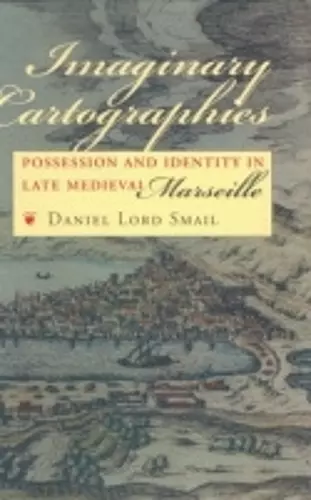Imaginary Cartographies
Possession and Identity in Late Medieval Marseille
Format:Hardback
Publisher:Cornell University Press
Published:14th Dec '99
Currently unavailable, and unfortunately no date known when it will be back

How, in the years before the advent of urban maps, did city residents conceptualize and navigate their communities? In his strikingly original book, Daniel Lord Smail develops a new method and a new vocabulary for understanding how urban men and women thought about their personal geography. His thorough research of property records of late medieval Marseille leads him to conclude that its inhabitants charted their city, its social structure, and their own identities within that structure through a set of cartographic grammars which powerfully shaped their lives.
Prior to the fourteenth century, different interest groups—notaries, royal officials, church officials, artisans—developed their own cartographies in accordance with their own social, political, or administrative agendas. These competing templates were created around units ranging from streets and islands to vicinities and landmarks. Smail shows how the notarial template, which privileged the street as the most basic marker of address, gradually emerged as the cartographic norm. This transformation, he argues, led to the rise of modern urban maps and helped to inaugurate the process whereby street addresses were attached to citizen identities, a crucial development in the larger enterprise of nation building.
Imaginary Cartographies opens up powerful new means for exploring late medieval and Renaissance urban society while advancing understanding of the role of social perceptions in history.
This book makes a lively and original contribution to current debates on state development.
-- Karl Appuhn, Columbia University * Sixteenth Century Journal *Imaginary Cartographies is a masterful case study of the relationship between spatial representation and the emergence of identity in late medieval and early modern Marseille. Through exhaustive archival and theoretical research, Smail explores the ways in which notorial records refer to an individual's relationship to the territory, thereby revealing the emergence of the notion of personal and national identity.... The author's convincing argument allows his readers to rethink not only how identity was articulated in the late medieval and early modern period, but also how both visual and linguistic spatial representations intersect in an emergent national imagination. The scope of Smail's work will appeal across lines of discipline as this book... lays out a solid methodological approach, navigating smoothly between the theoretical and the archival.
-- Elisabeth Hodges * Mapline *In this interesting and thought-provoking work, Daniel Smail concludes that the emergence of the street as the normal cartographic marker led first to the development of urban maps, and finally to the process of attaching street addresses to citizens.... Smail's work is scholarly and is highly recommended.
-- A.G. Traver * History: Reviews of New Books *This book is elegantly written, and it is a pleasure to follow its argument through learned forays into topics ranging from cognitive psychology to cartography.... This is an ambitious book, filled with ideas that will stimulate researchers to look much more closely at records that they may have taken for granted.
-- John Drendel, Universite du Quebec * Speculum *This is an important work, establishing a methodology and analytical framework that I hope will inspire studies of these questions of language, perception, and statecraft elsewhere, including the other towns of Provence and cities in the north that were little affectd by the culture of the public notaries.
-- David Nicholas, Clemson University * American Historical Revi- Winner of Winner of the 1999 Social Science History Associat.
ISBN: 9780801436260
Dimensions: 229mm x 152mm x 25mm
Weight: 907g
280 pages